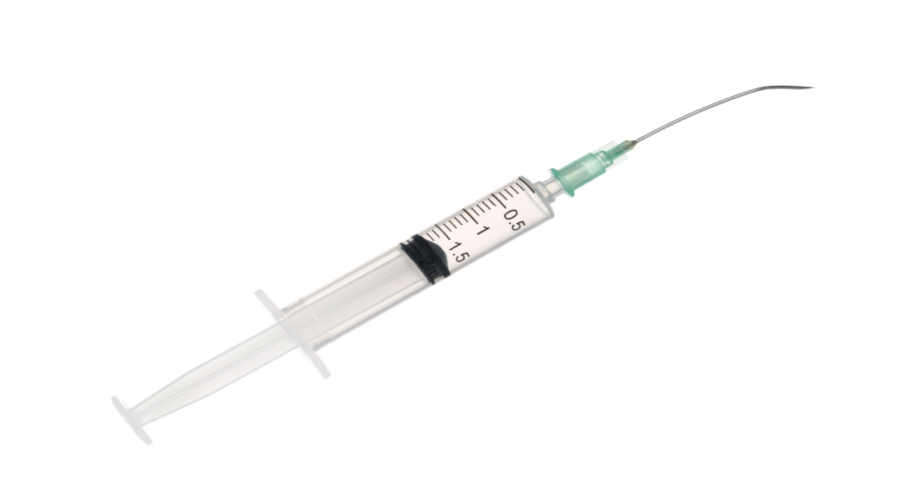What keeps customers coming to your front end?
Is your price lower than your online and mail-order competition? Do you have a broader product selection? Do you take orders in the late evening and weekends?
Most independent pharmacies don’t have the resources to compete with online retailers and pharmacies in convenience and price. But your brick-and-mortar locations enable you to engage patients in ways impossible for retailers who only exist in cyberspace.
“One of the greatest differentiators between internet-based purchases and in-store selection is the ability for brick-and-mortar retailers to engage shoppers in a more emotional way by tapping into the five senses,” said Dave Wendland, Vice President, Strategic Relations and a member of the owners group at Hamacher Resource Group (HRG), a firm that focuses on improving results across the retail supply chain by addressing dynamic needs such as assortment planning and placement, retail execution strategy, fixture coordination, item database management, brand marketing, and analytics.
“The front of the store is really where the five senses can become a value-add to the shopping experience and a definite continuation of differentiation.”
Many independent pharmacies, and retailers generally, struggle to engage more than sight and sound in their front end. But Wendland said there are numerous ways to stimulate all the senses to make your pharmacy more successful.
“I’m convinced there’s unrealized opportunity in every retail operation. Specifically, every pharmacy I visit has untapped potential,” Wendland said. “Looking for ways to appeal to the shopper through one or all of the senses will keep them engaged, create a more memorable experience, and enhance their perception of the pharmacy well into the future.”
Touch
Touch is the most-neglected sense by independent pharmacies, Wendland said. But items whose quality depends on texture and thickness, like hosiery and incontinence products, really need to be felt by patients before a purchase. “You can’t sell those without letting the customer touch them,” Wendland said. “I strongly dislike signs that say ‘do not touch.’ If I can’t pick an item up, I’m not going to buy it.”
To engage customers tactilely, leave a “test” version product out for patients to feel. Make sure to label it as a test product. Categories that make for good touch testers include bath, home safety, and skin care. High-end lotions do double work by promoting both touch and smell. And they can be especially convincing products.
“Not only will the guests be enthralled with the idea of putting something on that’s both free and theoretically they hadn’t considered buying, but it also gives a soothing sensation to the skin and it may lead to a sale,” Wendland said.
Wendland also suggests placing hand sanitizer stations throughout the store to reinforce your dedication to cleanliness.
Sound
What your pharmacy chooses to play over the speakers forms part of your identity, Wendland said. The volume, genre, and quality all matter.
Stick to sounds and songs with consistent volume levels. Avoid offending or turning away customers with profanity, politically charged rhetoric, or talk radio. Also, make sure you don’t play a radio station repeatedly advertising one of your competitors.
As far as which type of music or ambient noise to play, that varies. “I think it’s up to the individual pharmacy and the kind of mood they want to set,” Wendland said. “It really depends on what kind of an expression of the store you’re trying to portray.”
Also consider the privacy of patients near the prescription counter and in the waiting area. Are there enough barriers to prevent sound from carrying? Would the waiting area benefit from a soothing water feature?
Smell
When patients walk into a pharmacy, the first thing they notice is the smell. “The often overlooked fact is that the olfactory nerve is one of the most sensitive senses we have,” Wendland said.
That sensitivity makes finding the right balance of scent difficult. The smell of rubbing alcohol or bleach makes Wendland suspect a cover-up. Mustiness makes him leery. Too much of any scent makes him concerned about allergic reactions.
The pharmacy owner or manager should test out different smells and figure out what’s right for them. “It really depends on what you’re trying to do,” he said. “But it shouldn’t smell like an operating room and it better not smell like an attic.”
He’s seen pharmacies succeed by using diffusers in the store with pleasant, subtle scents like vanilla or eucalyptus. Some advanced retailers even use motion-activated diffusers throughout the store with specific scents appropriate to that section of product.
Taste
Taste is likely the last sense you think of in a pharmacy. “I think it’s perhaps one of the more difficult to achieve,” Wendland said.
Focus on food and drink items, such as herbal teas, healthy smoothies, nutrition bars, or baked treats. Get creative. But make sure the snacks align with your image.
Also, take advantage of your consulting room, Wendland suggested. For example, when you’re consulting patients with diabetes, offer them a sample of a nutritional drink or bar that fits their needs. “Having them take a small piece doesn’t cost a lot of money but it can lead to loyalty,” Wendland said.
Sight
Of all the senses, sight is the most important. “Because impressions are formed first by what is seen, that impression is established right away,” Wendland said.
Keep everything in your front end bright, crisp, clean, and colorful. Use natural light if possible.
“I’m a fan of lifestyle photographs and colorful banners that attract attention,” Wendland said.
Make sure your signs are easy to read and displays artistically set up. Only use chalkboard signs if the handwriting looks good. “If it looks like one your physician’s prescriptions, then I would say stay away from it,” Wendland joked.
Summing up the senses
As you look to spice up the individual senses, don’t forget to think collectively. “You have to consider how the interaction of all these different senses work with and against each other,” Wendland said.
Fully engaging your patients’ senses isn’t a set-it-and-forget-it task. Don’t let yourself get comfortable and complacent.
“Approach every single day as if it’s the grand opening,” Wendland emphasized. He mentioned checking every detail of the pharmacy to make sure it’s shipshape. You wouldn’t leave a dead plant in the window or sour odor in the store on a grand opening, for example.
“Those are things that you would never allow on an opening, nor should you allow the first-time a visitor who comes through the door. Imagine the difference that makes if the pharmacy was approached with that kind of vigor each day, and spruced on the appearance, appealing to all five senses.”
Top Tips for Spicing Up the Senses
Check out these tips for engaging all five senses in your pharmacy from Dave Wendland, Vice President, Strategic Relations and a member of the owners group at Hamacher Resource Group (HRG).
Sound
- Avoid anything controversial or harsh
- Don’t play music with loud or volatile volume
- Know your patients’ taste
- Use quality speakers
- Avoid advertisements of competitors
- Arrange speakers for optimal acoustics
Sight
- Brighten the interior, with natural light if possible
- Use colors to set the mood
- Make signs clean, crisp, and easy to read
- Make end caps sharp
- Set up displays artistically
Smell
- Find a good balance—not too strong, not too weak
- No “operating room” smells
- Avoid musty and stale smells
- Muted floral or herb scents work well
- Use well-placed diffusers
Taste
Offer samples of food and drink products, such as:
- Natural fruit smoothies
- Nutritional bars or drinks
- Caffeine-free herbal tea
- Gluten-free baked treats
- Condition-specific products for patients you consult
Touch
Open and display products for patients to test. Prime categories for touch include:
- Hosiery
- Bath
- Home safety
- Incontinence
- Skin care
- Cosmetics
From the Magazine
This article was published in our quarterly print magazine, which covers relevant topics in greater depth featuring leading experts in the industry. Subscribe to receive the quarterly print issue in your mailbox. All registered independent pharmacies in the U.S. are eligible to receive a free subscription.
Read more articles from the December issue:
- The complete guide to CBD, the new profitable plant product sweeping the nation
- How to protect your patients from online pharmacy scams
- One simple solution to making more money from your front-end
- The latest independent pharmacy trends from 2018 NCPA Digest
- The guide to getting a loan from the experts who lend them out
- How one independent pharmacy thrives through nonprofit partnerships
- New USP guidelines on water purity for reconstitution












